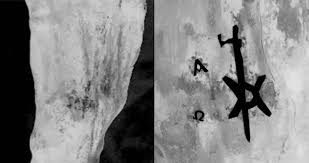Archaeologists have made a rare and exciting discovery at the Ghazali archaeological site in Sudan. While examining the remains of a 1,300-year-old body, bioarchaeologist Kari Guilbault noticed a mark on the corpse’s right foot. Upon closer inspection, it was revealed to be a tattoo referencing Jesus Christ.
The tattoo, dating back to the seventh or eighth century C.E., combines the Greek letters chi and rho, which are an abbreviation for the word “Christ.” This symbol, known as the “Chi-Rho” symbol, first appeared around 324 C.E., along with the Greek letters alpha and omega. These letters signify the Christian belief that God is the beginning and the end of everything.
This discovery is particularly significant, as it is only the second medieval Nubian tattoo ever found. Nubia encompassed present-day Egypt and Sudan. What sets this tattoo apart from others in the region is the use of straight lines instead of the more common “dot and dash” technique.
Experts believe the placement of the tattoo on the right foot may be a reference to the crucifixion of Jesus Christ. Roman soldiers reportedly drove nails through his hands and feet when affixing him to the cross. The positioning of the tattoo suggests that it held a personal rather than public meaning, as it was most visible to its owner. However, Christianity was widely practiced in the region during the individual’s lifetime.
The body with the tattoo was discovered during an excavation of the Ghazali site between 2012 and 2018. Although not buried with the monastery’s monks, the individual was laid to rest in a nearby cemetery possibly used by the local community. The person is believed to have lived between 667 and 774 and likely died between the ages of 35 and 50. The occupation of the tattooed individual is uncertain, whether they were a monk or not.
Unfortunately, the fragile state of the remains prevents researchers from taking a sample from the tattoo to determine its origin. The arid conditions of Sudan, however, have partially mummified the body, preserving the tattoo to some extent.
The discovery of this tattoo raises many questions about the practice of tattooing and the expression of faith in medieval Nubia. It provides valuable insights into how Christianity played a role in people’s lives during that period.
